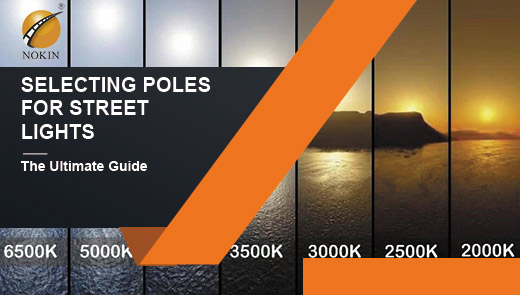LED Streetlights vs HPS Streetlights: What's the Diff?
In the world of urban lighting, streetlights play a key role in ensuring safety and visibility at night. Among the many available lighting options, LED streetlights and high-pressure sodium (HPS) streetlights stand out as two of the most popular types. But how are they different? Let's take a closer look.
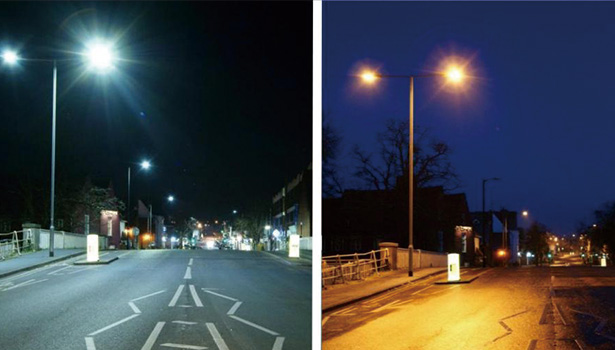
What Are HPS Street Lights?
High-pressure sodium vapor lamps belong to the family of gas discharge lamps, similar to low-pressure sodium lamps (also known as high-intensity discharge, HID, or arc lamps). The fundamental difference between low-pressure and high-pressure sodium lamps is the operating pressure inside the bulb. As the name implies, high-pressure sodium lamps operate at a higher internal pressure.
The arc tube of a high-pressure sodium lamp is made of aluminum oxide and contains sodium metal inside. To balance out the yellow light emitted by the sodium, other elements such as mercury are added, which also produce some white to light blue light. These lights are ideal for areas where high-pressure sodium vapors exist, such as industrial parks and manufacturing plants.
What Are LED Street Lights?
LED street lights are integrated light-emitting diode fixtures designed for street lighting. They are typically designed to be easily mounted on poles. A key feature of LED street lights is the use of a variety of lenses. These lenses allow for different light distribution, making them suitable for all types of streets and roads.
In addition to street lighting, LED street lights have a wide range of applications. They are commonly used for LED parking lot lighting, garden lighting, plaza lighting, and playground lighting. Their versatility and energy-saving features make them popular in many outdoor lighting scenarios.
Comparing the Pros of LED Streetlights and HPS Streetlights
Pros of LED streetlights
High Energy Efficiency
One of the most significant advantages of LED streetlights is their excellent energy efficiency. To achieve the same level of brightness (measured in lumens), LED lights use significantly less energy than high-pressure sodium (HPS) lights. Over time, this energy efficiency results in significant cost reductions, both in terms of electricity costs and overall energy consumption.
Long Life
The life expectancy of LED lamps is impressive. While high-pressure sodium lamps typically last between 24,000 and 28,000 hours, LED bulbs can last up to 100,000 hours. This long life means less maintenance and fewer replacements, reducing maintenance costs in the long run.
Highly customizable
LED lamps offer a wealth of customization options. Users can adjust color temperature, brightness level, dimming mode, and beam angle. This flexibility allows for the ideal lighting atmosphere and effect, whether it's a busy city street or a quiet residential neighborhood.
Instant Lighting
LED lamps light up instantly, with no warm-up time required. This feature makes them ideal for areas that require immediate illumination, such as intersections or emergency response areas.
Pros of HPS Street Lights
Lower cost
High-pressure sodium lamps are relatively inexpensive compared to LED lamps. For cities and municipalities with limited budgets, this cost-effectiveness makes them an attractive option for lighting projects.
Warm light effect
High-pressure sodium lamps emit a warm amber light, which for some is more aesthetically appealing. This warm light can create a cozy and pleasant atmosphere in certain scenes.
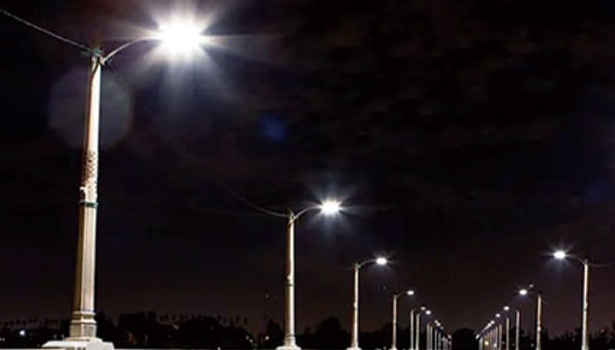
Comparing the Cons of LED Streetlights and HPS Streetlights
Cons of LED streetlights
High initial installation costs
While LED street lights can save money in the long run due to their energy efficiency and long life, they are more expensive to install upfront than high-pressure sodium (HPS) lights. This can be a significant financial hurdle for cities or municipalities on a tight budget.
Light quality and color temperature issues
LED streetlights emit a cooler blue light that some people find less appealing than the warm amber light emitted by high-pressure sodium lights. In addition, if not installed properly, LED lights can produce glare and cause light pollution, which can negatively impact the environment and human health.
High maintenance and replacement costs
While LED streetlights typically require less maintenance than high-pressure sodium lamps, when they fail, replacement costs can be high. In some cases, the entire fixture needs to be replaced, not just the bulb, which can be costly.
Cons of High-pressure sodium street lights
Low energy efficiency
High-pressure sodium lights are far less energy efficient than LED street lights. They consume more energy, which can lead to higher electric bills over time. This not only affects municipalities' budgets but also increases their carbon footprint.
Light color limitations
The warm amber light of high-pressure sodium lamps, while preferred by some, can make identifying colors and objects more difficult at night. This can pose a safety hazard in areas where accurate visual identification is critical.
High maintenance and replacement costs
High-pressure sodium lamps require more frequent maintenance and bulb replacement than LED street lights. This results in higher maintenance costs over time and more disruption during replacement.
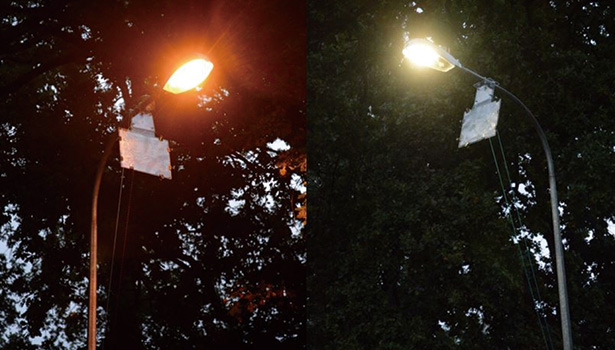
What is the Difference Between LED Streetlights and HPS Streetlights?
Lumen Efficiency
Lumen is the international unit of luminous flux, which measures the amount of light emitted per second from a uniform light source with a luminous intensity of one candela per unit of cubic angle (one spherical degree). Simply put, it measures the amount of light obtained per unit of energy input.
LED lamps typically have efficiencies between 40 and 120 lumens per watt. While high-pressure sodium lamps may have a higher lumens-per-watt rating, they are omnidirectional. This means that a large amount of light is directed at objects that are not the intended illumination targets, resulting in wasted light. In contrast, LED lamps spread light at an angle of 180 degrees, which means more light is directed precisely where it is needed.
Other Performance Parameters
|
Feature |
LED Streetlights |
High-Pressure Sodium Streetlights |
|
Power Consumption |
Significantly lower, saving over 70% electricity |
Higher power consumption |
|
CCT (Correlated Color Temperature) |
3000K - 7000K (wide range, more choices) |
2000K - 2500K (warm yellow light) |
|
CRI (Color Rendering Index) |
65 - 85 (better color rendering) |
20 - 25 (poor color rendering) |
|
Voltage |
AC90V - AC305V (wider range, more adaptable) |
AC200V - AC230V |
|
Driving Efficiency |
Higher |
Lower |
|
Luminous Efficiency |
High efficiency, low light decay |
Low efficiency, severe light decay |
|
IP Rating |
Typically IP66 (better dust & water protection) |
Typically IP65 |
|
Protection Class |
Class I/II |
Class I |
|
Start-up Time |
Instant start |
5-10 minutes to full brightness |
|
Continuous Start |
Allowed |
Not allowed (needs a few minutes after shutdown) |
|
Environmentally Friendly |
No mercury, no UV radiation |
Mercury pollution, UV radiation |
|
Heat Generation |
Only about 30% of the heat generated by high-pressure sodium lamps |
Generates more heat |
LED Streetlights and HPS Streetlights Impact on Flora and Fauna
Impact on animals
A number of scientific studies have shown that LED streetlights have a significant impact on animals. For example, a study by the Swedish University of Agricultural Sciences found that the blue light from LED streetlights interferes with the flight patterns of nocturnal insects. Insects are phototropic, and the high-energy blue light emitted by LED street lamps will attract a large number of insects to gather and make them deviate from the normal flight path, which not only affects their own reproduction and foraging behavior but also causes a chain reaction on the entire ecological food chain. Since many birds and bats feed on insects, changes in insect behavior may lead to a reduction in food sources for these predators.
A study by the U.S. Fish and Wildlife Service points out that LED streetlights in coastal areas can interfere with the navigation systems of migratory birds during their migratory season. Birds rely on starlight and the Earth's magnetic field to orient themselves during nighttime migration, and the glare and specific spectrum of LED streetlights can confuse their perceptions, causing some migratory birds to become disoriented and deviate from their migration routes, increasing the risk of death during migration.
In contrast, the warm light of high-pressure sodium lamps has relatively little impact on animals. However, their lower energy efficiency means that more lamps are needed to provide the same lighting effect, which to some extent indirectly expands the range of light to animal habitats and may affect the nocturnal activities of some light-sensitive animals. For example, some small mammals, such as hedgehogs and shrews, may have their range of motion and foraging behavior disturbed by the expanded illumination range of high-pressure sodium lamps.
Impact on plants
The growth and development of plants depend on photosynthesis, and the spectrum and intensity of light have a key role to play. Research conducted by the Wageningen University in the Netherlands shows that the spectrum of LED street lights differs from the spectrum of natural light required by plants for photosynthesis; in particular, its higher proportion of blue light may affect the biological clock and hormone regulation of plants. In some green belts alongside urban roads, plants grown under long-term exposure to LED streetlights may suffer from disrupted growth cycles, such as abnormal leaf growth and early or delayed flowering.
Although the warm light of high-pressure sodium lamps has a relatively small impact on plants in terms of spectrum, the large area illumination caused by their high energy consumption may cause plants to receive light for a period of time beyond the normal range, which will also interfere with the normal physiological process of plants. For example, some short-day plants may not be able to enter dormancy due to the prolonged illumination by high-pressure sodium lamps, affecting their growth and reproduction in the coming year.
In some ecological reserves, such as the Norfolk Broads National Park in the United Kingdom, the impact on plants and animals is fully considered in the selection of lighting fixtures. The park management initially used high-pressure sodium lamps for lighting and found that it had an impact on the surrounding firefly populations, and the reproduction and glowing behavior of the fireflies were disturbed. Later, some areas were replaced with LED streetlights with specific spectra that have relatively less impact on insects and plants, and through rational planning of the lighting layout, the negative impact on plants and animals was reduced, and to a certain extent, the population of fireflies was restored.
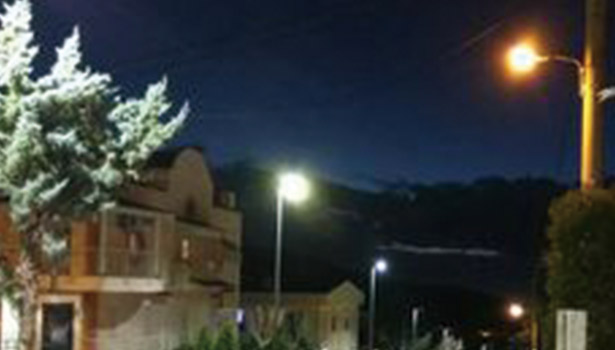
How long do HPS and LED street lights last?
High-Pressure Sodium Lamps
Theoretically, a high-pressure sodium lamp lasts 3000 hours after the light decays by about 30%. In practice, their lifespan is between 5,000 and 15,000 hours. In addition, they are limited in the number of times they can be switched on and off. Generally speaking, they can only be switched on and off 4000 to 5000 times. After reaching this number of times, it is difficult to light up again.
LED Street Lights
For LED streetlights, the light decay after one year of use is only about 8% as measured by a tester, and this change is barely noticeable to the naked eye. Most LED lamps are not bright enough to be replaced until they have been in use for 4-6 years due to light decay. In comparison, LED streetlights last 4-6 times longer than high-pressure sodium lamps. This means that high-pressure sodium lamps will need to be replaced 4 to 6 times over the same time period, while LED lamps will only need to be replaced once.
Making the Right Choice: Factors to Consider for Your Project
Budget
If budgets are tight, the lower initial cost of high-pressure sodium lamps can be attractive. However, it is important to consider the long-term savings that LED lamps offer. Financing options or grants can be found to bridge the gap between the upfront cost of LED lamps and available funds.
Light quality requirements
LED lighting is preferable in areas where accurate color reproduction and high visibility are important, such as areas with high pedestrian traffic or where safety is an important consideration, and where the higher color rendering index and adjustable color temperature of LED lamps ensure better visibility and color discrimination.
Energy efficiency goals
If the project aims to minimize energy use and reduce carbon emissions, LED lights are the best choice. Their energy-saving properties are in line with the global trend towards sustainable green energy solutions.
Maintainability
The long lifespan and low maintenance requirements of LED lamps make them ideal for areas with limited maintenance resources or strict requirements for minimizing disruption.
Environmental regulations
As environmental regulations become stricter and more environmentally conscious, mercury-free LED technology is increasingly preferred. Choosing LED lamps helps ensure compliance with environmental standards.
Smart city initiatives
LED technology provides a better platform for cities wishing to implement smart city control systems. LED lamps can be easily integrated with sensors and smart control systems for remote dimming, motion-activated lighting, and real-time monitoring.
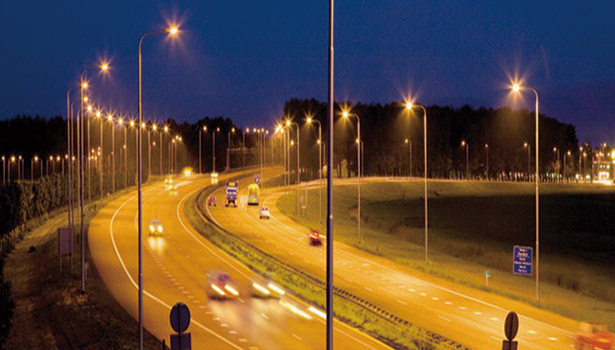
In conclusion, LED street lights and high-pressure sodium street lights have their advantages and disadvantages. The choice between the two depends on a careful evaluation of specific project needs, budgets, and long-term goals. By considering these factors, you can make an informed decision about the most effective and efficient street lighting solution for your area.

